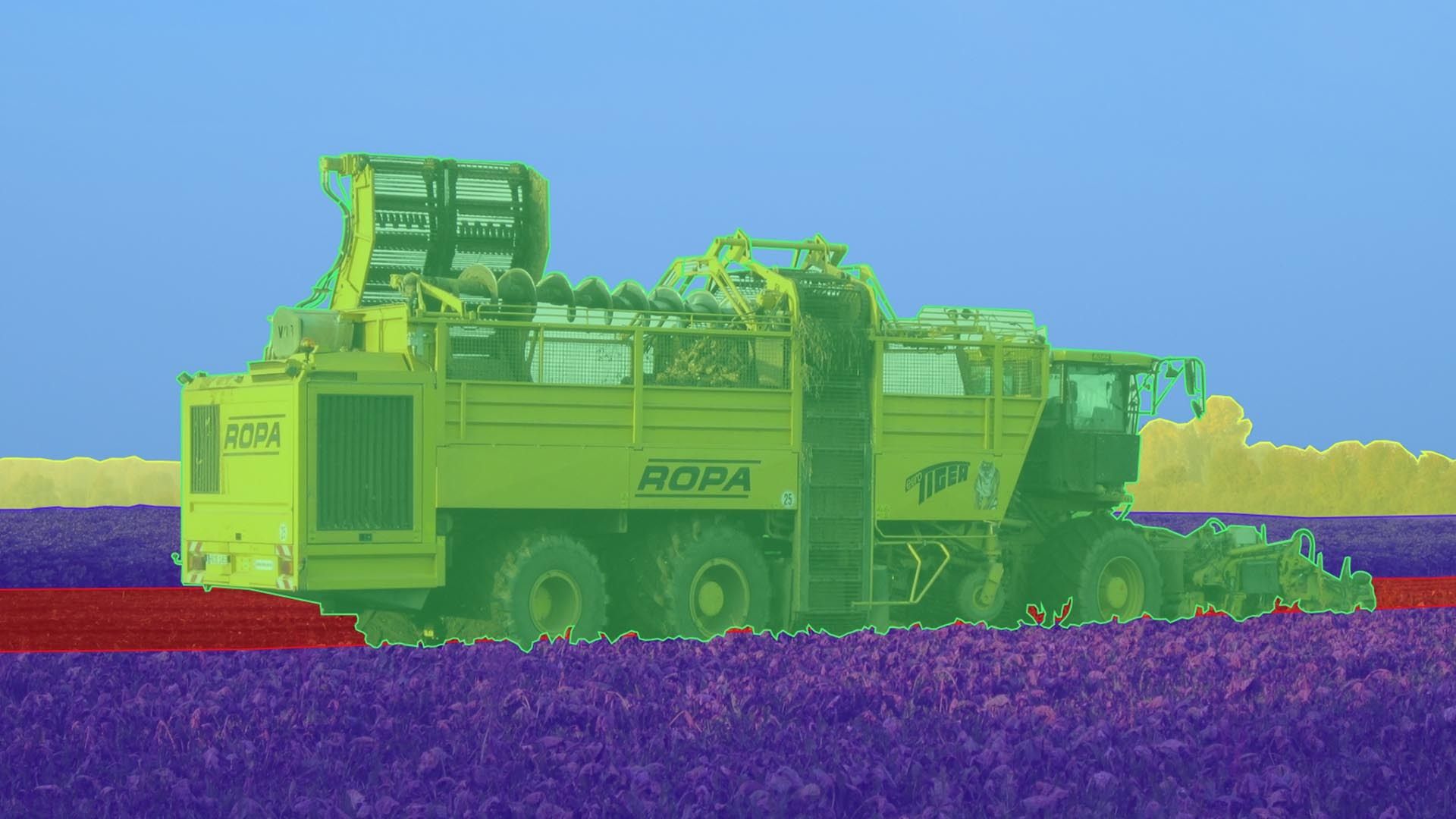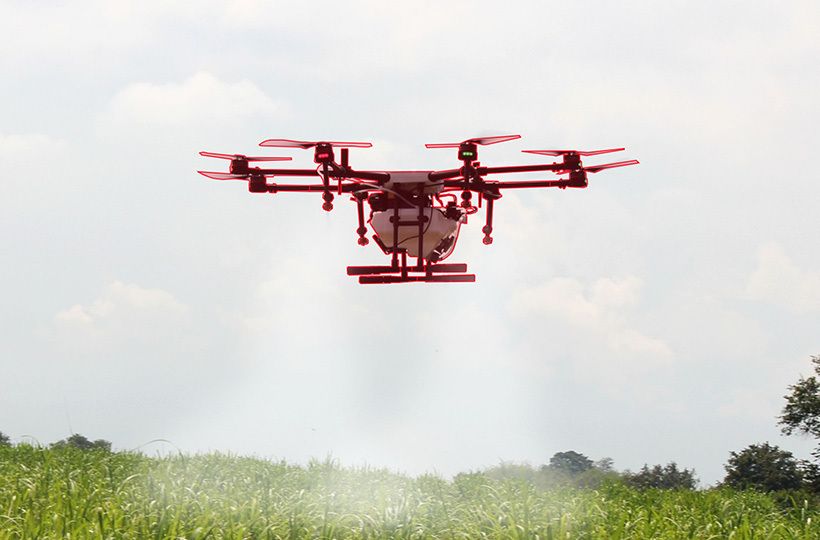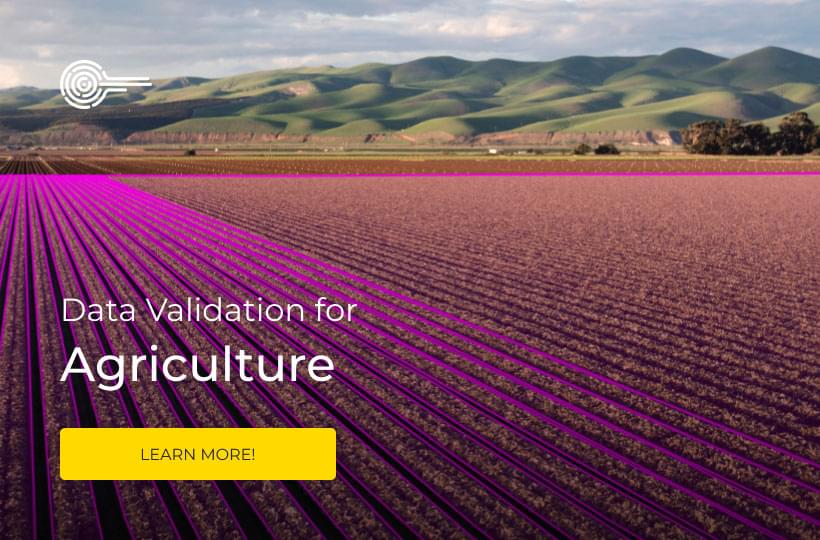The Future of Farming is Smart: Exploring Smart Farming Technologies Powered by AI

Smart farms leveraging AI and robots can produce fresh products all year, using just 5% of the water traditional farms do. This fact underscores the transformative effect of smart farming technologies on agriculture. As the global population is set to hit 9.7 billion by 2050, AI in agriculture is becoming pivotal.
Smart farming and precision agriculture are redefining how we cultivate food. These technologies equip farmers with the tools to make informed decisions based on data, optimize resource utilization, and enhance crop yields. AI-driven drones can monitor crop health, while machine learning algorithms predict the best planting times, opening up a world of possibilities.
Key Takeaways
- Smart farms use 95% less water than traditional methods
- Global population projected to reach 9.7 billion by 2050
- AI-driven farming solutions optimize inputs like fertilizers and irrigation
- Precision agriculture boosts crop yields and reduces resource waste
- Smart farming technologies address labor shortages in agriculture
- AI and IoT revolutionize agricultural production and farming practices

The Growing Need for Smart Agriculture
As global food demand increases, the importance of smart farming becomes paramount. The world is facing unprecedented agricultural challenges, with the population projected to reach 10 billion by 2050. This growth intensifies the pressure on farmers to enhance crop yields and secure food security.
Global Population Growth and Food Demand
The hunger crisis is escalating. A 2020 study found that 690 million people suffer from hunger, a 60 million increase over five years. This trend emphasizes the critical need for innovative farming solutions to fulfill the rising food demands.
Challenges Facing Traditional Farming Methods
Traditional farming is struggling to meet global demands. Limited land, labor shortages, and climate change are significant obstacles. Soil fertility decline and environmental concerns complicate food production further. These challenges underscore the necessity for smarter, more efficient farming methods.
The Role of Technology in Agriculture
Technology brings hope to these agricultural challenges. Smart farming technologies are transforming the industry. They improve crop health, decrease pesticide use, and enhance product quality. Although only 15% of global farmers currently employ smart agriculture, its potential is immense.
| Smart Farming Benefits | Impact |
|---|---|
| Crop Yield Increase | Optimized farming activities |
| Resource Efficiency | Reduced fertilizer and water usage |
| Labor Reduction | Automation of manual tasks |
| Environmental Protection | Decreased greenhouse gas emissions |
Smart agriculture holds the promise of a future where food security is attainable despite the mounting challenges. By adopting these technologies, farmers can produce more efficiently, ensuring a sustainable food supply for future generations.
Understanding Smart Farming
Smart farming marks a significant shift in agriculture. It merges precision agriculture with advanced technologies to enhance crop yields and reduce resource consumption. This approach is reshaping the agricultural sector, addressing the pressing need for increased global food production.
Smart farming's foundation is built on data-driven insights. Farmers employ sophisticated sensors and IoT devices to gather real-time data on crops, soil, and weather. This information is then processed by AI algorithms, offering crucial insights for decision-making.
AI plays a pivotal role in smart farming. These systems predict the best planting times, identify crop diseases early, and automate irrigation based on soil moisture. This leads to more efficient and sustainable farming, significantly cutting down on waste and environmental harm.
Smart farming technologies extend beyond crop management, transforming livestock farming as well. AI-powered systems monitor animal health, optimize feed distribution, and forecast potential health issues early.
The advantages of smart farming are clear:
- Increased crop yields and quality
- Reduced water and pesticide use
- Lower labor costs through automation
- Improved farm management and decision-making
- Enhanced sustainability and reduced environmental impact
As the world's population grows, smart farming technologies present a viable solution. By adopting these innovative methods, we can forge a sustainable and productive agricultural future.
AI-Powered Decision Making in Agriculture
AI-powered agriculture tools are revolutionizing farming. They allow farmers to make decisions backed by data-driven insights. This technology profoundly impacts crop management and resource allocation.
Data-Driven Insights for Farmers
Data-driven farming optimizes farm operations. AI processes vast data from weather, soil conditions, and market trends. These insights help farmers in making informed decisions about planting, harvesting, and resource use.
Predictive Analytics for Crop Management
Predictive analytics in agriculture is transforming crop management. AI uses historical and real-time data to forecast market demands and crop prices. It determines the optimal times for planting and harvesting. This technology helps farmers:
- Plan crop cycles more effectively
- Optimize resource allocation
- Reduce waste and improve yields
Real-Time Monitoring and Analysis
AI-powered tools offer real-time monitoring and analysis of farm conditions. They use sensors and drones to gather data on soil health, weather, and crop status. This data is analyzed to provide recommendations on fertilizer, pesticides, irrigation, and disease prevention.
Farm management software powered by AI enhances production and profitability. It facilitates better decision-making from seed selection to harvest timing. As AI advances, its impact on agriculture will increase, leading to more efficient and sustainable farming.
Cost Savings and Efficiency in Smart Farming
Smart farming technologies are transforming agriculture, leading to significant cost reductions and efficiency gains. By adopting these innovations, farmers can implement cost-effective farming methods and boost productivity.
Precision agriculture is a cornerstone of smart farming. It enables farmers to cultivate more crops with less resources. This method employs advanced sensors and analytical tools to gather data on soil conditions, weather, and crop growth. Armed with this data, farmers can make strategic decisions about planting, harvesting, and fertilizing. This results in better crop yields and less waste.
AI-driven systems offer real-time insights into crop conditions, optimizing farm operations. For instance, these technologies can pinpoint areas needing herbicides, reducing usage and environmental impact. Automated systems also cut down on labor costs while enhancing productivity.
Here are some key benefits of smart farming in terms of cost savings and efficiency:
- Up to 5% increase in yield and quality
- Potential savings of 118 million euros in growers' costs
- 10-15% reduction in operational costs
- Up to 20% increase in crop yields through precision agriculture
- 15% reduction in greenhouse gas emissions
Embracing smart farming technologies leads to substantial cost savings and promotes sustainability. By optimizing resource use and minimizing waste, farmers contribute to a greener and more economically viable agricultural sector.
| Smart Farming Technology | Benefit | Impact |
|---|---|---|
| Farm Management Information Systems | Improved data analysis | Optimal planting schedules and irrigation strategies |
| Precision Agriculture | Data-driven decision making | Increased crop yields and reduced resource waste |
| Agricultural Automation and Robotics | Reduced manual labor | Increased efficiency in farming operations |
| IoT in Agriculture | Real-time monitoring | Improved resource management and productivity |
Automation and Labor Solutions in Agriculture
Agricultural automation is revolutionizing farming methods. With the global population at 7.7 billion and rising, the need for smart solutions is paramount. Labor shortages in agriculture can escalate costs by up to 50%, highlighting the importance of AI-driven farm machinery.
AI-Driven Farm Machinery
Enterprises like Bear Flag Robotics are at the forefront with their driverless tractors. These machines operate non-stop, addressing labor shortages and enhancing efficiency. Eco Robotics elevates this with solar-powered autonomous robots, championing eco-friendly farming.
Smart Irrigation and Fertilization Systems
Smart irrigation systems are transforming water management. The RAPID project presents cost-effective solutions with adjustable emitters. DJI Agras MG-1 drones can cover 6,000 m² in mere minutes, ensuring precise irrigation. These innovations enable farmers to save time and money while conserving resources.
Agricultural Drones and Robots
Drones offer real-time crop monitoring and analytics. Agrobots cater to evolving consumer demands for eco-friendly practices. These technologies facilitate precision agriculture, optimizing yields and minimizing environmental impact.
The global agriculture market expanded from $11,109.32 billion in 2021 to $12,152.6 billion in 2022, with a 9.4% CAGR. This growth reflects the increasing adoption of agricultural automation technologies, driving efficiency and sustainability in farming practices worldwide.

Key Applications of AI in Smart Farming
AI is transforming farming by addressing various challenges faced by farmers. It improves resource management and pest control. Let's delve into key areas where AI is significantly impacting farming.
Optimizing Irrigation Systems
AI is revolutionizing water management in agriculture through smart irrigation systems. These systems use IoT sensors to monitor soil moisture and weather conditions. AI analyzes this data to determine precise water needs for crops, ensuring optimal growth while conserving water. This approach saves water and reduces costs for farmers.
Crop and Soil Monitoring
AI is transforming crop monitoring. Machine learning algorithms analyze satellite images and drone footage to detect crop stress, nutrient deficiencies, and pests. Continuous monitoring allows farmers to address issues promptly, enhancing crop health and yields. AI also monitors soil conditions, offering insights on pH levels, nutrient content, and moisture levels to optimize fertilization.
Pest and Disease Detection
Early detection of pests and diseases is vital in agriculture. AI-driven computer vision systems can identify these issues with over 90% accuracy. By analyzing crop photos, these systems detect disease or pest infestations before they are visible to humans. This enables farmers to act quickly, reducing crop losses and pesticide use.
Livestock Health Management
AI is also transforming livestock management. Drones and cameras with computer vision technology monitor cattle health remotely. These systems detect unusual behavior, identify distressed animals, and predict birthing times. This ensures better animal welfare and increases productivity in livestock farming.
As AI evolves, its applications in agriculture become more sophisticated and widespread. From smart irrigation to precision livestock management, these technologies are leading to more efficient, sustainable, and productive farming practices.
Precision Agriculture and Yield Optimization
Precision agriculture with ML is transforming farming. It combines advanced technology and data analytics for efficiency and sustainability. The concept began in the 1990s, but now includes drones, AI, and IoT systems.
Yield optimization is crucial in precision agriculture. Farmers employ satellite imagery and remote sensing for real-time crop health monitoring. Soil sensors continuously monitor nutrient and moisture levels. These tools ensure precise resource allocation, reducing waste and enhancing yields.
AI algorithms process vast data to uncover patterns and trends in farming. This leads to data-driven decisions for better crop management. For instance, Midwest corn farmers use machine learning for more accurate yield forecasts than traditional methods. This precision aids in planning and marketing.
Smart farming techniques, such as Variable Rate Technology (VRT), apply resources based on field conditions. This tailored approach reduces costs and enhances environmental sustainability by minimizing waste.
| Region | Crop | AI Application | Result |
|---|---|---|---|
| Midwest USA | Corn | Yield forecasting | Improved harvest planning |
| India | Cotton | Growth pattern prediction | Increased yield and profit |
| France | Grapes | Maturation rate prediction | Higher-quality wine production |
Leaders like John Deere and Agmatix are at the forefront of precision agriculture. They integrate data analytics and machine learning into their offerings, aiding farmers in optimizing their operations. The future of farming looks promising, with a focus on sustainability and productivity.
The Future of Smart Farming Technologies
The future of agriculture is rapidly evolving with AgriTech trends leading the way in sustainable farming practices. As the world's population grows, smart farming technologies are becoming essential. They help meet increasing food demands while minimizing environmental impact.
Emerging Trends in AgriTech
Vertical farming and AI-powered greenhouses are emerging in the AgriTech scene. These innovations enable year-round crop production in controlled environments, optimizing resource use. Advanced robotics are also transforming farm operations. With smart farming technologies, tasks from planting to harvesting are being streamlined.
Sustainable Farming Practices
Sustainable farming is a key focus in agricultural innovation. Precision agriculture employs data to optimize resource use, reducing waste and environmental impact. For instance, smart irrigation systems can cut water usage to just 1% of traditional methods.
Integration of IoT and AI in Agriculture
The integration of IoT and AI is revolutionizing farming practices. These technologies enable real-time monitoring and adjustment of crop conditions, ensuring optimal health and yield. Sensors collect data on soil quality, climate, and crop status. AI then analyzes this information to provide actionable insights for farmers.
| Smart Farming Technology | Impact |
|---|---|
| Farming Drones | Spray 1 hectare in 10 minutes (vs. 90 minutes traditionally) |
| Automated Planting | 400,000 seeds planted per day with 10 drones |
| Smart Sensors | Control environment in smart greenhouses |
| AI Analytics | Provide insights on crop selection and soil health |
As these technologies become more accessible, they're set to transform agriculture globally. They promise a future where farming is more efficient, sustainable, and capable of meeting the world's growing food needs.
Summary
Smart farming is transforming agriculture, offering numerous benefits that tackle global challenges. AI in agriculture's future looks promising, with technologies like precision farming and robotics changing traditional methods. These innovations enhance efficiency and set the stage for sustainable agriculture that can fulfill increasing food demands.
The advantages of smart farming are evident. Data from sensors and IoT devices enables real-time monitoring and informed decisions. This results in better resource management, less waste, and higher crop yields. Autonomous equipment and drones are making farming operations more efficient, while AI and machine learning accurately predict weather and pest patterns.
The global smart farming market is expected to expand significantly, reaching $15.3 billion by 2025. This growth presents challenges, such as high initial costs and the need for farmer training. However, the potential for sustainable, efficient, and productive agriculture is vast. Adopting these technologies not only improves your farm but also contributes to a more sustainable and food-secure world.
FAQ
What is smart farming?
Smart farming is a method that combines advanced soil management, variable rate technology, and effective data management. It aims to maximize yields while minimizing resource use. This approach involves collecting and analyzing data using analytics and technologies like computer vision, IoT, and geospatial analytics.
How does AI help in agriculture?
AI revolutionizes agriculture by enabling data-driven decisions. It allows farmers to process vast amounts of data swiftly. Predictive analytics help forecast market trends, optimize planting and harvesting times, and improve crop health. AI also explores soil health, monitors weather, and suggests the best applications of fertilizers and pesticides.
Furthermore, farm management software enhances production and profitability. It empowers farmers to make informed decisions at every crop cultivation stage.
What are the benefits of smart farming technologies?
Smart farming technologies significantly reduce costs and enhance efficiency. Precision agriculture enables farmers to grow more with less. AI provides real-time insights into crop conditions, reducing herbicide use and enhancing harvest quality.
Automated systems cut down on labor costs and boost productivity. Farmers utilizing these technologies report a 5% increase in yield and quality. This leads to savings of 118 million euros in growers' costs.
How does automation help in agriculture?
Automation addresses labor shortages in agriculture. AI-driven tools include driverless tractors, smart irrigation systems, drones, and AI-based greenhouse robots for harvesting. These automated systems outperform human workers in efficiency and accuracy.
How does AI optimize irrigation systems?
AI optimizes irrigation systems by using IoT sensors to monitor soil moisture and weather. It detects irrigation system leaks by analyzing data patterns. AI also monitors crop and soil conditions, identifying nutrient deficiencies and predicting yields.
How does AI help in pest and disease detection?
Computer vision models accurately identify pests and diseases. For livestock, solutions like CattleEye employ drones and cameras for remote health monitoring. They detect unusual behavior and activities such as birthing.
What is precision agriculture?
Precision agriculture employs data-driven insights to optimize farming processes from planting to harvesting. It minimizes waste, reduces costs, and boosts yields. AI-powered yield mapping uses machine learning to analyze data in real-time, helping farmers understand crop patterns for better planning.
What are some emerging trends in smart farming?
Emerging trends include vertical farming, AI-powered greenhouses, and advanced robotics. Sustainable farming practices aim to reduce environmental impact through efficient resource use. IoT and AI integration enables continuous monitoring and adaptation to climatic changes, ensuring optimal crop health and yield.




